Syllabi-ME154 01-S20 - Lecture notes 2 PDF

| Title | Syllabi-ME154 01-S20 - Lecture notes 2 |
|---|---|
| Author | Spam Spammington |
| Course | Mechanical Engineering Design |
| Institution | San José State University |
| Pages | 4 |
| File Size | 216.9 KB |
| File Type | |
| Total Downloads | 115 |
| Total Views | 158 |
Summary
Syllabus ...
Description
San José State University Department of Mechanical Engineering ME 154 Mechanical Engineering Design, Section 01, Spring 2020 Course and Contact Information Class Days/Time:
Mondays and Wednesdays 10:30AM-12:10PM
Classroom:
Engineering Building, room 301
Registration Code:
22780
Prerequisites:
ME101, CE112, MatE 25, ME20, all with a C- or better.
Corequisite:
TECH/ME 041 (either completed previously or co-enrolled)
Instructor:
Dr. Raymond K. Yee
Office Location:
Engineering 310B
Telephone:
408-924-3935
Email:
[email protected]
Office Hours:
Mondays 1:30 to 2:30pm and Wednesdays 4:00-5:00pm
Course Format This is a mixed-mode class, with both in-person and online components. Online components require use of the Canvas learning management system, accessed via https://sjsu.instructure.com/. Successful completion of course requirements necessitates accessing the course website frequently, typically at least twice a week on a regular basis. Technical support for Canvas is available at http://www.sjsu.edu/at/ec/canvas/. Important communications regarding this class may be sent via Canvas or to email addresses listed in MySJSU, and thus each student is expected to maintain up-to-date contact information in both systems. Course Description http://info.sjsu.edu/web-dbgen/catalog/courses/ME154.html Introduction to the design and analysis of mechanisms and machine elements. Linkage synthesis. Kinematic and dynamic analysis of mechanisms. Application of statics, dynamics, strength of materials, static failure theories and fatigue theory to the design of machine components. Threaded fasteners. Group design project. Learning Outcomes Upon successful completion of this course, students will be able to: 1. Apply the concept of kinematics pairs (joints) and determine the number of degrees of freedom for a given mechanism. 2. Identify the different types of four-bar mechanisms and their classifications. 3. Identify the toggle positions and to determine the minimum transmission angle and mechanical advantage of a given mechanism. 4. Synthesize a four-bar mechanism using graphical and analytical methods for a given motion or function generation task. 5. Perform a kinematics analysis of a mechanism to determine position, velocity, and acceleration of all members. 6. Perform a kinetic analysis of a mechanism to determine the forces on all joints and the torque required to drive the mechanism. 7. Determine the magnitude and location of the maximum stress (principal stresses, maximum shear stress and von Mises stress) on a component.
ME 154 Mechanical Engineering Design, Spring 2020
Page 1 of 4
8. Design and analyze short and long columns. 9. Design and analyze thin and thick walled cylinders under pressure and to select proper interference fits for press or shrink fits. 10. 11. 12. 13.
Design and analyze ductile and brittle machine components under static loads using appropriate failure criterion. Estimate the value of stress concentration factor. Design and analyze machine components under cyclic loads to guard against fatigue failure. Design bolted joints in tension and shear.
14. Work as a team to accomplish a project goal. Required Textbooks 1. 2.
Design of Machinery, 5th ed., by R. L. Norton, McGraw-Hill, 2012. ISBN 9780077421717 (with software), 9780073529356 (no software), or 9781121466852 (custom for ME 154, via Spartan Bookstore). Machine Design, An Integrated Approach, 5th ed., by R. L. Norton, Prentice Hall, 2014.
Supplementary Textbooks 1. 2. 3. 4.
Waldron and Kinzel: Kinematics, Dynamics, and Design of Machinery, Wiley, 1999. Erdman, Sander, and Kota: Mechanism Design; Analysis and Synthesis, Vol. 1, 4th ed., Prentice Hall, 2001. Juvinall and Marshek: Fundamentals of Machine Component Design, 3rd ed., Wiley, 2000. Shigley and Mischke: Mechanical Engineering Design, 6th ed., McGraw-Hill, 2001.
Course Requirements and Assignments According to the Office of Graduate and Undergraduate Programs http://www.sjsu.edu/gup/syllabusinfo/ , “Success in this course is based on the expectation that students will spend, for each unit of credit, a minimum of 45 hours over the length of the course (normally 3 hours per unit per week with 1 of the hours used for lecture) for instruction or preparation/studying or course related activities including but not limited to internships, labs, clinical practica. Other course structures will have equivalent workload expectations as described in the syllabus.”
Design Project: A major (and hopefully enjoyable!) part of this course is the Design Project. Students are responsible for working in a team to design a mechanism (both synthesis and analysis) and to build a prototype that demonstrates its functionality. Details are provided via separate documentation.
Exams: There are two midterms and one final exam. All students are expected to complete exams in class as scheduled. There are no make-up exams, but for truly unavoidable and extenuating circumstances with firm documentation, a student may petition to have weight redistributed to the final exam. Disability accommodations must be coordinated through the Accessible Education Center http://www.sjsu.edu/aec/.
Homework: Homework problems will be assigned corresponding to lecture topics and reading assignments from the textbooks. Homework is due at the very beginning of class on designated deadline dates and late submission receives zero credit. (See “Exceptions” below regarding petition for extenuating circumstances.)
Participation Tasks: Throughout the semester there will be several participation tasks to promote active engagement. Specific examples include assigned discussion posts, online/in-class quizzes or surveys, and peer review. These will be tallied for credit with strict deadlines and there are no make-up options. Tasks may be in-class or online, so it is important to attend class and to check Canvas regularly.
Although University Policy F15-12 at http://www.sjsu.edu/senate/docs/F15-12.pdf states that “Attendance shall not be used as a criterion for grading”, the policy also states, “Students are expected to attend all meetings for the courses in which they are enrolled as they are responsible for material discussed therein” and furthermore, “Participation may be used as a criterion for grading when the parameters and their evaluation are clearly defined in the course syllabus and the percentage of the overall grade is stated.”
ME 154 Mechanical Engineering Design, Spring 2020
Page 2 of 4
Grading Policy The course grade will be weighted as follows: 12% for Homework 8% for Participation Tasks (Project/Quizzes) 34% for two Midterm Exams (17% each) 20% for Design Project 26% for Final Exam The overall course grade is calculated from a weighted sum of all graded components. Graded percentage points correspond to letter grade as follows: 93.0-100 A | 90.0-92.9 A- | 87.0-89.9 B+ | 83.0-86.9 B | 80.0-82.9 B77.0-79.9 C+ | 73.0-76.9 C | 70.0-72.9 C- | 67.0-69.9 D+ | 63.0-66.9 D | 60.0-62.9 D- | 0-59.9 F Team Assignments and Peer Grading: Team assignments will be used for some portions of the course, and some assignments may involve peer grading. Alternative options will be considered for compelling reasons, but arrangements must be pre-approved in writing with ample time before corresponding deadlines (i.e. several days or even weeks in advance). Exceptions: Any grading appeals or late petitions must be petitioned promptly in writing (or email). Exceptions will normally be evaluated at the very end of the semester in context with semester track record and all other exceptions classwide. Special consideration for truly unavoidable and extenuating circumstances will depend on timing and strength of supporting documentation (e.g., doctor's note, jury summons, military orders). University Policy F13-1 at http://www.sjsu.edu/senate/docs/F13-1.pdf states: “All students have the right, within a reasonable time, to know their academic scores, to review their grade-dependent work, and to be provided with explanations for the determination of their course grades.”
University Policies Per University Policy S16-9, university-wide policy information relevant to all courses, such as academic integrity, accommodations, etc. will be available on Office of Graduate and Undergraduate Programs Syllabus Information web page at http://www.sjsu.edu/gup/syllabusinfo/
ME 154 Mechanical Engineering Design, Spring 2020
Page 3 of 4
Tentative Course Schedule (Subject to change) This schedule is subject to change with fair notice via announcement in class or notification via Canvas. Specific reading assignments and deadlines will be communicated in Canvas. Week
Dates
Topics, Readings, Assignments, Deadlines
1
1/27, 1/29
Course organization, introduction of linkages, degrees of freedom, kinematic pairs, 4-bar mechanisms. (Ch2 in DoM*). Mechanism classification, transmission angle. (Ch2, Ch3 in DoM). Design Project discussion.
2
2/3, 2/5
Graphical synthesis, motion generation mechanisms (two & three positions), mechanical advantage, toggle positions, adding dyad to mechanism. (Ch2, Ch3 in DoM). Position analysis: complex polar notation. (Ch4 in DoM)
3
2/10, 2/12
Position analysis: closed loop vector equation, motion generation mechanisms. (Ch 4 in DoM)
4
2/17, 2/19
Analytical synthesis: closed loop vector equation, motion generation mechanisms (two to five positions). (Ch 5 in DoM)
5
2/24, 2/26
Velocity & acceleration analyses: function and path generation mechanisms, analytical analysis: velocity and acceleration. (Ch 6 & 7 in DoM)
6
3/2, 3/4
Acceleration analysis. (Ch 7 in DoM) 1st Midterm Exam (Wednesday)
7
3/9, 3/11
Forces on mechanisms: free body diagrams, matrix solution method for linear equations. Example problems. (Ch 11 in DoM)
8
3/16, 3/18
Review of stress and strain, principal stresses. (Ch 4 in MD**) Review of combined stresses: bending, torsion. Column design. (Ch 4 in MD)
9
3/23, 3/25
Failure theories for static loads: Distortion-Energy theory (for ductile materials), modified Coulomb-Mohr theory (for brittle materials). (Ch 5 in MD)
10
3/30, 4/1
Spring Recess (no classes)
11
4/6, 4/8
Design of thin and thick walled cylinders, press and shrink fits, material selection for design. (Ch 2&4 in MD), Stress concentrations (Ch 4 and Appendix C in MD)
12
4/13, 4/15
Failure theory for cyclic loads, high cycle fatigue, S-N curve. (Ch 6 in MD) 2nd Midterm Exam (Wednesday)
13
4/20, 4/22
Effect of mean stress on fatigue life (Modified Goodman Diagram), combined stresses for cyclic loading case. Example problems. (Ch 6 in MD)
14
4/27, 4/29
Bolted joint design: thread standards, stresses, bolt stiffness and member stiffness. (Ch 15 in MD)
15
5/4, 5/6
Static and fatigue stress analysis, bolted joints in tensile and shear loads, bolt preload and torque, design considerations. (Ch 15 in MD)
16
5/11
Design Project presentation and demonstration
The Final Exam will be held on Friday, May 15th from 9:45 AM to 12:00 noon in the regular classroom. * Design of Machinery textbook ** Machine Design textbook
ME 154 Mechanical Engineering Design, Spring 2020
Page 4 of 4...
Similar Free PDFs

Lecture notes, lecture 2
- 3 Pages

2 - Lecture notes 2
- 5 Pages

Lecture notes, lecture Chapter 2
- 11 Pages
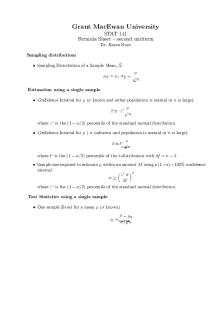
Lecture notes, lecture formula 2
- 1 Pages

2 Biodiversity - Lecture notes 2
- 33 Pages

Chapter 2 - Lecture notes 2
- 30 Pages
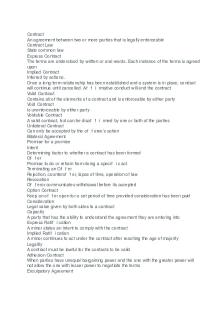
Blaw 2 - Lecture notes 2
- 4 Pages

Chapter 2 - Lecture notes 2
- 4 Pages
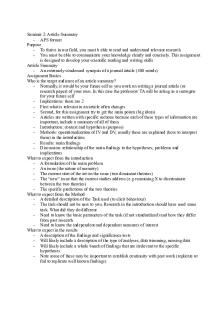
Seminar 2 - Lecture notes 2
- 2 Pages
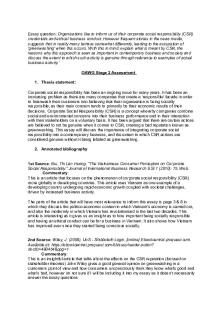
Stage 2 - Lecture notes 2
- 3 Pages
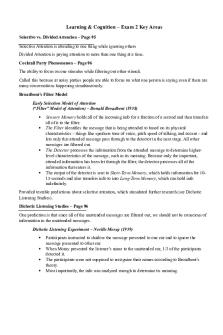
Exam 2 - Lecture notes 2
- 5 Pages

Lectia 2 - Lecture notes 2
- 3 Pages
Popular Institutions
- Tinajero National High School - Annex
- Politeknik Caltex Riau
- Yokohama City University
- SGT University
- University of Al-Qadisiyah
- Divine Word College of Vigan
- Techniek College Rotterdam
- Universidade de Santiago
- Universiti Teknologi MARA Cawangan Johor Kampus Pasir Gudang
- Poltekkes Kemenkes Yogyakarta
- Baguio City National High School
- Colegio san marcos
- preparatoria uno
- Centro de Bachillerato Tecnológico Industrial y de Servicios No. 107
- Dalian Maritime University
- Quang Trung Secondary School
- Colegio Tecnológico en Informática
- Corporación Regional de Educación Superior
- Grupo CEDVA
- Dar Al Uloom University
- Centro de Estudios Preuniversitarios de la Universidad Nacional de Ingeniería
- 上智大学
- Aakash International School, Nuna Majara
- San Felipe Neri Catholic School
- Kang Chiao International School - New Taipei City
- Misamis Occidental National High School
- Institución Educativa Escuela Normal Juan Ladrilleros
- Kolehiyo ng Pantukan
- Batanes State College
- Instituto Continental
- Sekolah Menengah Kejuruan Kesehatan Kaltara (Tarakan)
- Colegio de La Inmaculada Concepcion - Cebu



